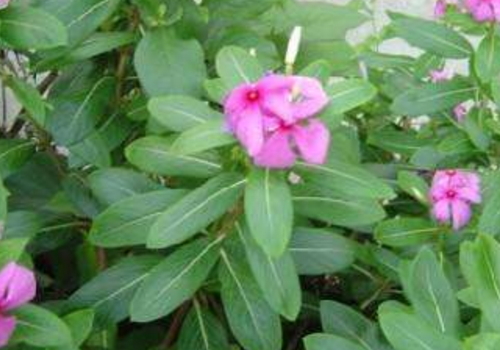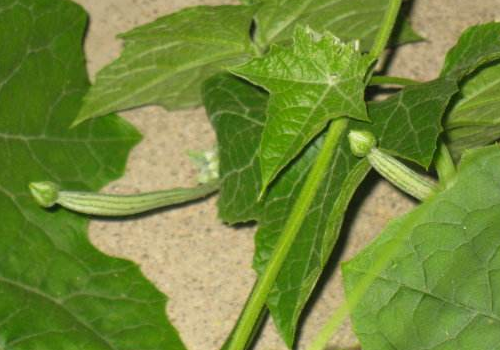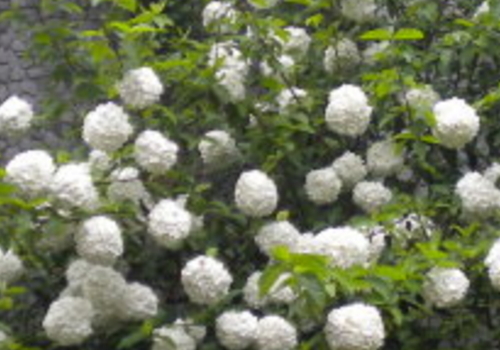How to raise Catharanthus roseus and how to turn yellow leaves?
Catharanthus roseus, which is raised by many people in life, will encounter some problems. How do you keep Catharanthus roseus in a pot? What if the leaves turn yellow?
How to raise Catharanthus roseus in an explosive pot:
1. Soil: when planting Catharanthus roseus, we must not choose saline-alkali soil, at the same time, the soil should have good drainage and air permeability.
2.Illumination: Catharanthus roseus prefers sunlight. It is beneficial to blossom and can effectively prevent overgrowth when placed in a sunny environment.
3. Temperature: the most suitable temperature for the growth of Catharanthus roseus is between 20 and 33 degrees Celsius. When the temperature drops to 15 degrees, Catharanthus roseus will stop growing. If the temperature is below 5 degrees, it will freeze Catharanthus roseus.
4. Fertilization: if the application of base fertilizer is not done well during planting, water-soluble fertilizer should be applied every 10 days during the growing period. But it is necessary to reduce the amount of fertilizer in winter.
5. Watering: Catharanthus roseus is afraid of stagnant water and waterlogging, which will make its roots rot.
6. Propagation: Catharanthus roseus can be exploded by the method of reproduction, both sowing and cutting propagation are OK, but the growth of Catharanthus roseus is stronger than that of cuttings.
As an ornamental flower, Catharanthus roseus is very good, it is very good to see after it burst, and it can bloom all the year round. Catharanthus roseus not only has ornamental value, but also has high medicinal effect. But to remind friends, when placed indoors, you must stay away from children, and absolutely not to eat, after eating by mistake will cause adverse reactions of the body.

What if the leaves of Catharanthus roseus turn yellow:
1. Soil alkalinity.
Catharanthus roseus does not have a high demand for soil, but it is suitable for growing in acidic soil, alkaline soil will lead to poor growth of Catharanthus roseus, causing leaves to yellowing and not flowering.
Solution: the acidity and alkalinity of the planted soil should be tested, and if the soil is partial to alkali, it should be treated.
2. Poor soil permeability.
Poor soil permeability is also the reason for the yellowing of Catharanthus roseus leaves. Many people plant flowers with high soil viscosity and poor water permeability. There is no problem with this kind of soil in the short term, but over time, the poor permeability of the soil results in poor breathing in the lower roots of Catharanthus roseus, resulting in frequent yellow leaves and fallen leaves.
Solution: choose sandy soil with good drainage performance to plant, but also pay attention to not watering too much.
3. Overwatering
Catharanthus roseus avoid dampness and fear of waterlogging, basin soil watering should not be too much, otherwise it will affect root breathing and cause old leaves yellow, new leaves yellow.
Solution: strictly control watering, it is better to dry, and pay attention to drainage in rainy season.
4. Excessive fertilization
Many flower friends worry that Catharanthus roseus does not have enough nutrients and blossom, and occasionally put a little fertilizer or something into the potted soil, hoping to absorb more flowers. This way is correct, but the fault lies in the frequency of fertilization, if fertilization is often applied, Catharanthus roseus is difficult to fully absorb, fertilizer remains in the soil, always around the root, resulting in the whole Catharanthus roseus malaise, slow growth, less flowering, petals smaller.
Solution: Catharanthus roseus can be applied alternately by compound fertilizer and liquid fertilizer, and don't apply fertilizer casually at other times. Watering the next day after fertilization promotes the absorption of nutrients.
5. Too little watering
Catharanthus roseus can not be watered too much or too little, too little or not watered thoroughly for a long time, the plant can not absorb enough water, the new leaves will wilt, and the old leaves will turn yellow and fall off.
Solution: pay attention to watering, basin soil can be watered after dry, watering should be thoroughly.
All right, that's all for the reasons and solutions for the yellowing of Catharanthus roseus leaves. All of you understand.
What if the leaves of potted Catharanthus roseus turn yellow?
Catharanthus roseus, alias Calendula, 04:00 Spring, Rixin, Yantouhong, 30, 000 flowers. Many varieties have been bred in Taiwan, and the greater the trend of flower breeding. In terms of the use of Chinese herbal medicine, the whole herb can relieve pain, anti-inflammation, sleep, laxation and diuresis. There are also doctors who are compatible with the compound prescription for the treatment of cancer, as a blindly in the medicine, it may take into account its anti-tumor ingredients. The toxicity of the whole plant needs to be considered. After accidental ingestion, it will cause leukopenia, thrombocytopenia, muscle weakness, limb paralysis and other symptoms. The alkaloids in its milk, such as vincristine and vincristine, are extracted as chemotherapy drugs for a variety of cancers such as leukemia and Hodgkin's disease.
The leaves of potted Catharanthus roseus appear yellow, the main reasons are:
Lack of light in ①. Catharanthus roseus likes a warm, sunny environment. If potted plants are placed in shade for a long time, the leaves will turn yellow due to lack of light.
The ventilation of ② basin soil is poor. Catharanthus roseus requires loose matrix and good ventilation, such as planting in clayey alkaline soil, resulting in poor root development due to soil consolidation, affecting the growth of aboveground parts and yellowing leaves.
③ is lack of fertilizer and stagnant water or too wet. Potted Catharanthus roseus in the growing period, such as insufficient fertilization and too much watering or poor drainage, will cause the leaf color to turn yellow. In view of the above reasons, strengthening maintenance in time can avoid leaf yellowing. What if the leaves of Catharanthus roseus (four Seasons Plum) turn yellow
The reason for the yellowing of Catharanthus roseus leaves: alkaline soil
Catharanthus roseus does not have a high demand for soil, but it is suitable for growing in acidic soil, alkaline soil will lead to poor growth of Catharanthus roseus, causing leaves to yellowing and not flowering.
Solution: the acidity and alkalinity of the planted soil should be tested, and if the soil is partial to alkali, it should be treated.
Poor soil permeability is also the reason for the yellowing of Catharanthus roseus leaves. Many people plant flowers with high soil viscosity and poor water permeability. There is no problem with this kind of soil in the short term, but over time, the poor permeability of the soil results in poor breathing in the lower roots of Catharanthus roseus, resulting in frequent yellow leaves and fallen leaves.
Solution: choose sandy soil with good drainage performance to plant, but also pay attention to not watering too much.
The reason for the yellowing of Catharanthus roseus leaves: too much watering
Catharanthus roseus avoid dampness and fear of waterlogging, basin soil watering should not be too much, otherwise it will affect root breathing and cause old leaves yellow, new leaves yellow.
Solution: strictly control watering, it is better to dry, and pay attention to drainage in rainy season.
The reason for the yellowing of Catharanthus roseus leaves: excessive fertilization
Many flower friends worry that Catharanthus roseus does not have enough nutrients and blossom, and occasionally put a little fertilizer or something into the potted soil, hoping to absorb more flowers. This way is correct, but the fault lies in the frequency of fertilization, if fertilization is often applied, Catharanthus roseus is difficult to fully absorb, fertilizer remains in the soil, always around the root, resulting in the whole Catharanthus roseus malaise, slow growth, less flowering, petals smaller.
Solution: Catharanthus roseus can be applied alternately by compound fertilizer and liquid fertilizer, and don't apply fertilizer casually at other times. Watering the next day after fertilization promotes the absorption of nutrients.
Catharanthus roseus can not be watered too much or too little, too little or not watered thoroughly for a long time, the plant can not absorb enough water, the new leaves will wilt, and the old leaves will turn yellow and fall off.
Solution: pay attention to watering, basin soil can be watered after dry, watering should be thoroughly.
- Prev

Towel gourd leaves yellowing. What to do?
How to do: towel gourd leaves yellowing how to return a responsibility: 1. Yellowing of new leaves caused by unreasonable fertilization
- Next

How to raise and reproduce Qionghua
Qionghua, a kind of plant that many people like, is very popular. How to raise Qionghua? How do you breed? How to raise Qionghua: 1. Soil: Qionghua has strong adaptability, sand, clay and general soil can be cultivated, and the roots of seedlings cultivated with sandy soil are well developed. 2. Transplanting: Qionghua transplanting is easy to survive.
Related
- Fuxing push coffee new agricultural production and marketing class: lack of small-scale processing plants
- Jujube rice field leisure farm deep ploughing Yilan for five years to create a space for organic food and play
- Nongyu Farm-A trial of organic papaya for brave women with advanced technology
- Four points for attention in the prevention and control of diseases and insect pests of edible fungi
- How to add nutrient solution to Edible Fungi
- Is there any good way to control edible fungus mites?
- Open Inoculation Technology of Edible Fungi
- Is there any clever way to use fertilizer for edible fungus in winter?
- What agents are used to kill the pathogens of edible fungi in the mushroom shed?
- Rapid drying of Edible Fungi

